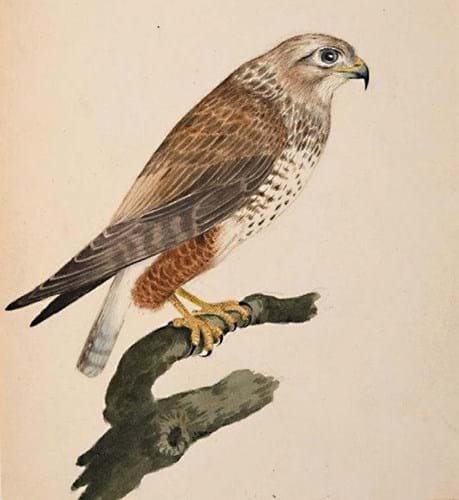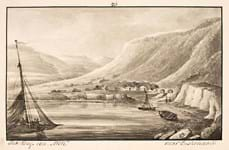
Offered at Lawrences (25% buyer’s premium) of Crewkerne, they were preserved in a later 19th century calf binding whose upper cover was blocked in gilt with the creator’s name and the title ‘British Birds. Neath 1804’.
Born into a devout Quaker family, and the son of a Bristol merchant, Young led a diverse and entrepreneurial life in his early years, said the cataloguer, but then bankruptcy forced him into paid employment. In 1803 he and his wife moved to Swansea in order to find employment as a ‘draftsman’ under a fellow Quaker, Lewis Weston Dillwyn, at the latter’s Cambrian Pottery. The watercolours in this collection would seem to date from that period.
Dillwyn and Young, both still relatively young, shared a common interest in natural history and many of Young’s painted wares for the pottery feature accurately depicted flora and fauna, as well as the taxonomic names of the illustrated species. Examples of this pottery, said the cataloguer, can be seen at London’s V&A, the National Museum of Wales in Cardiff and at the Glynn Vivian Art Gallery in Swansea.
Nantgarw investor
In 1814, and by that time more financially sound, Young became the major investor in the Nantgarw Pottery established by William Billingsley and Samuel Walker, and when they left the struggling business in 1820, Young assumed full control, and managed the debts through careful marketing and the sale of remaining stock.
He later marketed a heat-proof blast furnace brick, but unfortunately his luck did not last and he died in much reduced financial circumstances.













